Popular Patristics Series, Part 2 (10 vols.)
Digital Logos Edition
Overview
Important pieces of early Christian literature come alive with fresh translations in the Popular Patristics Series. Explore vivid theological poetry from St. Ephrem the Syrian. Uncover St. Gregory the Great’s treatise on pastoral duties. Plumb the depths of St. Gregory of Nazianzus’ major doctrinal poems and discover his lesser known Festal Orations. Examine letters from desert monks on a variety of spiritual and practical questions. Read 11 of St. Basil the Great’s moral homilies.
The Popular Patristics Series combs the riches of the early church writings in order to offer the church fathers’ wisdom anew to modern audiences. Recognized patristic scholars provide new English translations, accessible to a wide range of readers. They also include comprehensive introductions to these texts, which include classics of Christian literature, thematic volumes, homily collections, letters, books of spiritual guidance, and poetic works.
Studying the Popular Patristics Series with Logos streamlines and enhances your experience. Scripture citations link directly to English translations, and important terms link to dictionaries, encyclopedias, and a wealth of other resources in your digital library. Bolster your study by cross-referencing and comparing with an extensive library of Orthodox scholarship. Take your study with you using tablet and mobile apps. With Logos Bible Software, the most efficient and comprehensive research tools are in one place, so you get the most out of your study.
Check out Popular Patristics Series, Part 1 for more early Christian literature.

Key Features
- Compiles important early Christian texts
- Offers new English translations from recognized patristic scholars
- Includes selections of poetry, homilies, letters, treatises, and more
Product Details
- Title: Popular Patristics Series, Part 2
- Series: Popular Patristics
- Publisher: St. Vladimir’s Seminary Press
- Volumes: 10
- Pages: 2,127
- Christian Group: Orthodox
- Resource Type: Ancient Texts
- Topic: Early Church
Individual Titles
- Hymns on Paradise by Ephrem the Syrian
- On Ascetical Life by Isaac of Nineveh
- On God and Man by Gregory of Nazianzus
- On God and Christ by Gregory of Nazianzus
- Letters from the Desert by Barsanuphius and John
- Four Desert Fathers translated by Tim Vivian with Rowan A. Greer
- The Cult of the Saints by John Chrysostom
- The Book of Pastoral Rule by Gregory the Great
- Festal Orations by Gregory of Nazianzus
- On Christian Doctrine and Practice by Basil the Great
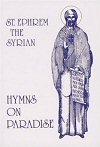
Explore St. Ephrem the Syrian’s cycle of fifteen Hymns on Paradise—a stunning example of Christian poetry which weaves profound theological musings around a biblical narrative. Beautifully translated by Syriac scholar Sebastian Brock, Ephrem’s hymns have an immediacy achieved by few other theological works from the early Christian period. Rather than being tied to a particular cultural or philosophical background, his theology operates by means of imagery and symbolism basic to all human experience.
Centered on Genesis 2 and 3, the Hymns on Paradise expresses his awareness of the sacramental character of the created world, and of the potential of everything in it to act as a witness to the creator. He posits an inherent link between the material and spiritual worlds. St. Ephrem’s mode of theological discussion is biblical and Semitic in character, using types and symbols to express connections and reveal things otherwise hidden—expressing meanings between the Old Testament and the New, between this world and the heavenly, between the New Testament and the sacraments, and between the sacraments and the eschaton.
St. Ephrem the Syrian was a Syriac and a prolific Syriac-language hymnographer and theologian of the fourth century. He is venerated by Christians throughout the world, and especially in the Syriac Orthodox Church, as a saint. Ephrem wrote a wide variety of hymns, poems, and sermons in verse, as well as prose biblical exegesis. These were works of practical theology for the edification of the church in troubled times.
Sebastian Brock was born in 1938 and studied Classics (Greek and Latin) and Oriental Studies (Hebrew and Aramaic) at Cambridge University before earning his DPhil at Oxford University, researching the text of the Septuagint. He has taught at the Universities of Birmingham, Cambridge, and Oxford, where he was Reader in Syriac Studies. He is well-known for his translation work of Syriac into English, and has published extensively in the field of Syriac studies, including An Introduction to Syriac Studies and The Bible in the Syriac Tradition.
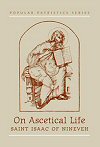
Mary Hansbury offers a fresh presentation of On Ascetical Life by Isaac of Nineveh, whose monastic anthropology had a major influence on all of Byzantine spiritual literature. According to St. Isaac, the way toward God was threefold: the way of the body, the way of the soul, and the way of the spirit. In the first stage, the person begins with a total preoccupation with the passions and moves toward God by means of bodily works: fasting, vigils, and psalmody. The next stage involves a struggle against thoughts foreign to the nature of the soul, turning from created objects to the contemplation of God’s wisdom and a transformation within. And as the person arrives at a total openness of the soul to the future hope, he or she proceeds to the final stage of unified knowledge—an attitude of wonder and praise in continual prayer to God, leading to the freedom of immortal life given after the resurrection.
Isaac of Nineveh (St. Isaac the Syrian) was a seventh-century monastic, bishop, and theologian, remembered especially for his written works. Isaac is unique in that he is commemorated as a Saint by the Oriental, Eastern Orthodox, and Catholic churches, despite living after the period of the Nestorian Schism.
Mary Hansbury received her PhD from Temple University in Philadelphia, specializing in early Christian studies in a world religions context. She has taught at La Salle University in Philadelphia and at Bethlehem University in Palestine.
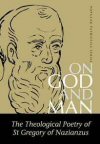
St. Gregory of Nazianzus is one of the most transparent Fathers of the Church. In these poems, he speaks of the joys and frustrations of his own life, laying bare his inner questioning about the purpose and value of life in the face of sin and mortality, and his ultimate faith in Christ as the redeemer and reconciler of all things. St. Gregory’s poetry has often been compared with St. Augustine’s Confessions—showing a peculiarly modern interest in the self. Peter Gilbert’s translations allow the reader to see that self-reflection in its theological context—offering beautiful renditions of his major doctrinal poems. Explore St. Gregory’s poems on the Trinity, creation and providence, angels and the soul, the person of Christ, and human nature. This volume also includes poems debating the Christian understanding of marriage and virginity.
Gregory of Nazianzus (329–391), also known as Gregory the Theologian, is widely considered the most accomplished rhetorical stylist of the patristic age. The Orthodox Church reveres him as one of the Three Holy Hierarchs along with Saint Basil the Great and Saint John Chrysostom. His significant contributions to the doctrine of the Trinity are keenly felt today, and his poems and prose reveal his tremendous wisdom.
Peter Gilbert earned his PhD from the Catholic University of America. He has taught at the Ukrainian Catholic University, Seton Hall University, and St. John’s College in New Mexico.

St. Gregory of Nazianzus, “The Theologian,” was recognized among the Cappadocian Fathers as a peculiarly vivid and quotable expositor of the doctrine of the Trinity. A brilliant orator and accomplished poet, he placed before the Church his interpretation of the sublime mystery of the God revealed as Father, Son, and Holy Spirit. These five sermons—probably delivered as a series at the small chapel of the Resurrection in Constantinople—contain Gregory’s penetrating teaching. Frederick Williams and Lionel Wickham’s English translation captures for the present-day reader the atmosphere of intellectual excitement and spiritual exhilaration experienced by St. Gregory’s first listeners. This volume also contains a new translation of St. Gregory’s letters to Cledonius, which contain more focused reflections on the person of Jesus Christ, laying the groundwork for later Christology.
Gregory of Nazianzus (329–391), also known as Gregory the Theologian, is widely considered the most accomplished rhetorical stylist of the patristic age. The Orthodox Church reveres him as one of the Three Holy Hierarchs along with Saint Basil the Great and Saint John Chrysostom. His significant contributions to the doctrine of the Trinity are keenly felt today, and his poems and prose reveal his tremendous wisdom.
Frederick Williams is professor of Greek at the Queen’s University in Belfast, translated the first oration.
Lionel Wickham was formerly lecturer in the faculty of divinity at Cambridge. He translated the other four orations and the two letters to Cledonius.

Dive into the letters of two monastic elders: the “Great Old Man,” Barsanuphius, and the “Other Old Man,” John, who lived in the southern region around Gaza during the early part of the sixth century. Maintaining strict seclusion within their cells, they spoke to others only through letters by way of Abba Seridos, the abbot of the monastic community in Gaza. John’s authority was more institutional, as he responds to problems of a practical nature, while Barsanuphius’ authority is more inspirational, responding to principles of a spiritual nature. Their letters were written to hermits, to monks in the community, to those in the choir, to priests, and to lay persons. Some were intended for advanced instruction, while others were intended for novices, according to the capacity of the inquirer. The questions and answers of these letters evoke the image of the Christian tradition being passed from elder to disciple. In John Chryssavgis’s fresh translations, the contemporary reader is enabled to appreciate the method and inspired to imitate the message.
John Chryssavgis studied theology in Athens and Oxford. He taught at St Andrew’s Theological College in Sydney and at Holy Cross School of Theology in Boston. His writings have focused on the early ascetic literature of Egypt, Palestine, and the Sinai Peninsula.

Pambo, Evagrius, Macarius of Egypt, and Macarius of Alexandria—the four fathers presented in this volume—were well known in Alexandria and lower Egypt some 1,600 years ago. Their lives, brought to fame by Palladius’ Lausiac History, provide valuable insight into the Egyptian monastic communities of the fourth century and into the saintly tradition of the Coptic Church. This volume offers the stories of their lives in fresh English translations by Tim Vivian.
Pambo was an Egyptian Desert Father of the fourth century, a disciple of St. Anthony the Great. He lived in the Nitrian Desert, where he founded several monasteries and became the spiritual father of other saints including St. Pishoy and St. John the Dwarf.
Evagrius (345–399) was from Pontus. He left an ecclesiastical career in Constantinople to become a monk in 383. He then traveled to Egypt, where he lived an ascetic life. He was a disciple of Basil of Caesarea, Gregory of Nazianzus, and Macarius of Egypt.
Macarius of Egypt (ca. 300–391) was an influential Desert Father, hermit, and founding father of monasticism. He was a disciple of St. Anthony the Great.
Macarius of Alexandria was a monk in the Nitrian Desert.
Tim Vivian is lecturer in religious studies at California State University, Bakersfield, and the translator of numerous early patristic texts.
Rowan A. Greer was the Walter H. Gray Professor Emeritus of Anglican Studies at Yale Divinity School.
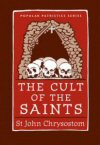
The cult of the saints is a phenomenon that expanded rapidly in the fourth century, and John Chrysostom’s homilies are important witnesses to its growth. In this volume, Wendy Mayer investigates the liturgical, topographical, and pastoral aspects that marked the martyr cult at Antioch and Constantinople in Chysostom’s time.
The cult’s original point of focus was the Christian martyrs—those followers of the Jesus-movement who died in confession of their faith, either at the hands of other Jews or at the hands of the Roman administration. Mayer pinpoints several conceptual shifts that identified and shaped this cult: the imitation of Christ’s own death; the creedal declaration “I am a Christian”; the sense of privilege bestowed upon martyrs; the ritual purity of relics; public veneration of the departed; and places made holy by martyrs’ blood. This rich collection includes homilies on martyrs Meletius, Eustathius, Lucian, Phocas, Juventinus and Maximinus, Ignatius, Eleazar (and the seven boys), Bernike, Prosdoke and Domnina, Barlaam, Drosis, and Romanus. It also includes encomia on Egyptian martyrs and on all the martyrs. The volume also includes two letters—one written by Chrysostom from exile concerning the use of martyr relics in a mission context, and one in which Vigilius, Bishop of Tridentum, offers him fresh Italian relics.
John Chrysostom, Archbishop of Constantinople, was an important Early Church Father. He is known for his eloquence in preaching and public speaking, his denunciation of abuse of authority by both ecclesiastical and political leaders, the Divine Liturgy of St. John Chrysostom, and his ascetic sensibilities. After his death (or, according to some sources, during his life) he was given the Greek surname chrysostomos, meaning “golden mouthed”, rendered in English as Chrysostom.
Wendy Mayer is a Queen Elizabeth II Research Fellow and deputy director at the Center for Early Christian Studies at Australian Catholic University.
Bronwen Neil is senior lecturer in ecclesiastical Latin (Burke Lecturership) at the Brisbane campus of Australian Catholic University.
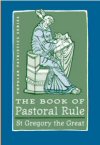
Recognized as the most thorough pastoral treatise of the patristic era, this sixth-century work bySt. Gregory the Great carefully details the duties and obligations of the clergy concerning the spiritual formation of their flock. Examine this important Early Christian document in fresh translation by George E. Demacopoulos.
Gregory the Great (ca. 540–604) was born into Roman nobility and was prefect of Rome before converting the family estate into a monastery dedicated to St. Andrew, where he remained until 579, when he was appointed as apocrisiarius to Constantinople. He began his papacy in 590 under the name Pope Gregory I.
George E. Demacopoulos is assistant professor of historical theology at Fordham University and author of Five Models of Spiritual Direction in the Early Church.
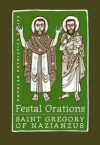
In the West, St. Gregory of Nazianzus is best known for his Five Theological Orations, a classic response to the theology of Eunomius, a late, radicalized form of Arianism. However, his Festal Orations have shaped the theology and spirituality of the Eastern churches in ways that have escaped the notice of those who read only the Theological Orations. In the context of festal proclamation and celebration, St. Gregory articulates his own theology with emphasis and rhetorical features different from those found in the five discourses. The doctrines he proclaims are inseparably intertwined with his pastoral teachings about Christian life. Now you can dive into this significant, and often overlooked, work in an engaging English translation by Sister Nonna Verna Harrison.
Gregory of Nazianzus (329–391), also known as Gregory the Theologian, is widely considered the most accomplished rhetorical stylist of the patristic age. The Orthodox Church reveres him as one of the Three Holy Hierarchs along with Saint Basil the Great and Saint John Chrysostom. His significant contributions to the doctrine of the Trinity are keenly felt today, and his poems and prose reveal his tremendous wisdom.
Nonna Verna Harrison is assistant professor of church history at St. Paul School of Theology in Kansas City, Missouri.
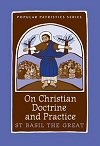
As a priest and then bishop, St. Basil the Great devoted sophisticated treatises to the Trinity and to articulating his vision of the Christian life. In his homilies, Basil distilled the best of his moral and theological teachings into forms readily accessible to his flock, and now to us. During his lifetime, Basil was recognized as one of the foremost rhetoricians of his day—a man supremely skilled in the art of speaking, instructing, persuading, and delighting at the same time. His rhetorical skills are on full display in the 11 moral homilies translated in this volume—seven of which appear in English for the first time.
Basil the Great, also called Basil of Caesarea, (330–379) was the bishop of Caesarea Mazaca in Cappadocia, Asia Minor. He was an influential fourth-century Christian theologian and monastic. Theologically, Basil was a supporter of the Nicene faction of the church, in opposition to Arianism on one side and the followers of Apollinaris of Laodicea on the other.
Mark DelCogliano teaches at the University of St. Thomas in St. Paul, Minnesota. He has published numerous translations of patristic works, including Basil’s Against Eunomius.
This title is included in the following collections
You can save when you purchase this product as part of a collection.
Popular Patristics Series (20 ...
$248.80$199.99Logos 8 Lutheran Silver Legacy...
$349.99$349.99Popular Patristics Series Coll...
$770.43$622.992025 Orthodox Gold
$849.99$679.99
- $849.99
- $849.99
- $849.99
- $849.99
- $849.99
- $849.99
- $1,499.99$1,199.99
- $1,499.99$1,199.99
- $1,499.99$1,199.99
- $1,499.99
- $1,499.99
- $1,499.99
- $1,499.99
- $1,499.99
- $1,499.99
- $2,999.99$2,249.99
- $2,999.99$2,249.99
- $2,999.99$2,249.99
- $2,999.99
- $2,999.99
- $2,999.99
- $2,999.99
- $2,999.99
- $4,749.99$3,324.99
- $4,749.99$3,562.49
- $4,749.99$3,562.49
- $4,749.99$3,562.49
- $4,749.99
- $4,749.99
- $4,749.99
- $4,749.99
- $4,749.99
- $7,749.99
- $7,749.99
- $10,999.99$8,249.99
- $11,377.57$8,499.99
- $12,989.68$10,391.74
- $23,999.99$17,999.99
- $21,749.99
- $24,999.99